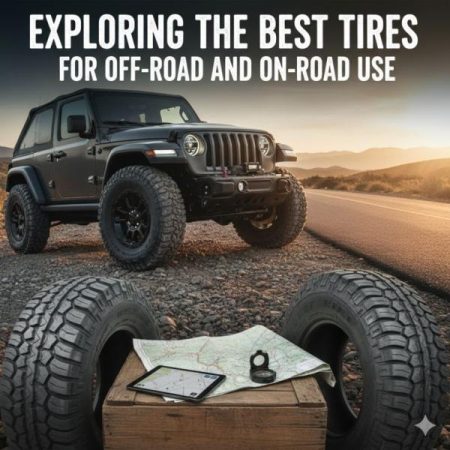It is noticeable that there are more and more self-service shops all over these days. This means that the number of self-maintenance groups who love cars so much that they even repair themselves is increasing, right? But is it really possible to self-repair, and is there any legal problem? My Car Maintenance Find out the range and tips of self-maintenance for gold-handed owners.
Car self-repair, can I really do it?
How much love and interest are you in my car? These days, there are many drivers who do maintenance by themselves with extraordinary passion + affection for cars. More and more people are doing self-maintenance of various mechanical devices that are essential for car operation, beyond simply washing or tuning the car.
If you do self-maintenance in this way, you will also save money, but you will be able to respond to crisis situations more quickly as you learn more about your car. However, not all parts can be self-maintained, so be sure to know what parts can be self-maintained. This is because, according to the current car management law, the scope and limits of car maintenance by car users are clearly defined. If car maintenance is not done properly, it may lead to a major accident on the road, so be careful. Check out the below for the range of self-maintenance that is generally applicable!
Also Read: The Safest Cars of 2021
Range of possible self-repair of automobiles (if not equipped with automobile maintenance facilities)
1. Prime mover ○ Exchange of air cleaner elements ○ Inspection and maintenance of lubricating devices excluding oil pump ○ Inspection and maintenance of fuel systems excluding diesel injection pump and gas container ○ Cooling system inspection and maintenance ○ Muffler replacement
2. Power transmission system ○ Oil replacement and replacement ○ Accelerator cable replacement ○ Clutch cable replacement
3. Brake system ○ Oil replacement and replacement ○ Brake hose, pedal and lever inspection ·Maintenance ○ Replacement of brake lining
4. Traveling device ○ Inspection/maintenance of traveling equipment excluding hub bearing ○ Inspection/maintenance of hub bearing (limited to replacement work of brake lining)
5. Shock absorber ○ Separation from other equipment Replacement of previously installed shock absorbers
6. Electrical equipment ○ Inspection and maintenance of electric devices excluding headlights and speed indicators
7. Others ○ Inspection and maintenance of in-vehicle equipment excluding seat belts ○ Inspection and maintenance of vehicle bodies excluding sheet metal, painting, and welding ○ Car wash and lubrication of each part of the chassis
Self car maintenance beginner: engine maintenance
Then, shall we start self-maintenance in earnest? The easiest part for those who are new to self-maintenance to try is supplementing and replacing various oils. It is especially useful to know basic maintenance tips for the engine part, the heart of the car. Of course, it’s the most important part and it needs to be handled more carefully.
The relatively easy maintenance of the engine part is the replacement of engine oil, engine filter and air cleaner element. Engine oil is a little trickier than replenishing washer fluid or coolant, so it is usually replaced at a workshop. Recently, there have been a lot of people who do it themselves. You can select a product that satisfies the viscosity and quality specifications and exchange it by referring to the’Recommended Oil Specification Table’ in the vehicle manual . When changing the oil, it is good to replace the engine filter and the air cleaner element that filters foreign substances in the air inhaled by the engine.
In particular, the air cleaner element can be easily replaced by loosening a few bolts, so anyone can challenge easily. It will last longer if it is periodically cleaned and refitted, or it can be disassembled and replaced with a new one in the same way. However, when locking nuts and bolts, be sure to tighten as much as possible by hand, but remember to keep the proper torque!
Q. Do you know the engine oil change cycle for my car?
In general, the engine oil exchange cycle is known as’every 5,000 km’. It can be said that the exchange cycle is slightly different depending on the vehicle type and driving habit. It’s a good idea to set an appropriate replacement cycle for your car by applying the mileage, driving habits, and usage environment to the standards in your car’s instruction manual!
Self Maintenance Intermediate: Brake + Light Maintenance
Now, once you have gained some confidence through engine maintenance, it’s time to challenge yourself to repair your brakes and lights! In the case of the brake system, the degree of replenishment and replacement of brake fluid and brake lining is possible through self-maintenance. From checking the brake hoses, pedals and levers, you can look through the brakes. In the case of the brake lining, if you hear a sound when you step on the brake and release your foot, it is a sign that it is time to replace it. However, it is a part that is directly related to safety, and if you are not confident, it is recommended that you obtain an expert maintenance.
Except for headlights and speed indicators, various electric devices such as electric bulbs, batteries, fuses, and signal lamps are also available for self-service! Recently released vehicles can be used semi-permanently using LED bulbs, but if the vehicle is a little older, it is necessary to change the bulbs periodically. First of all, you need to check the appropriate light bulb standard for your car and purchase it to prevent an accident that does not light up or melts the wiring.
Touching the glass part of a new light bulb with your hands shortens the lifespan, so be sure to wear gloves. In the case of the headlamp, open the bonnet and loosen the fixing clip slightly to replace it. In the case of the rear lamp, turn the socket out and replace it with a new light bulb. It’s a bit higher level of difficulty than going with a fluorescent lamp, so try using light bulbs that fit the standard!
Advanced self-maintenance: for experts in other areas of difficulty!
In addition, it is possible to maintain the cooling system, change the muffler, adjust the belt tension, clean the throttle body, change the shock absorber, change the accelerator cable, and change the transmission oil. Other than the relatively simple tasks introduced above, there are many areas that require advanced skills, so it is wise to seek professional help, even to the extent permitted by law.
Points to be aware of when self-repairing a car!
As safety is the first, there are many things to be aware of when doing self car maintenance. First of all, you must thoroughly familiarize yourself with the car manufacturer’s maintenance manual.
Also, it is very important to properly dispose of waste such as waste oil, waste antifreeze, and waste batteries that come out after self-maintenance! Since waste oil or waste antifreeze is a designated waste and is a substance that is harmful to the environment, you must ask the seller or a designated waste disposal company to dispose of it. There is also a method of requesting disposal at a nearby workshop. In the case of used batteries, online retailers often collect them, so don’t worry.











